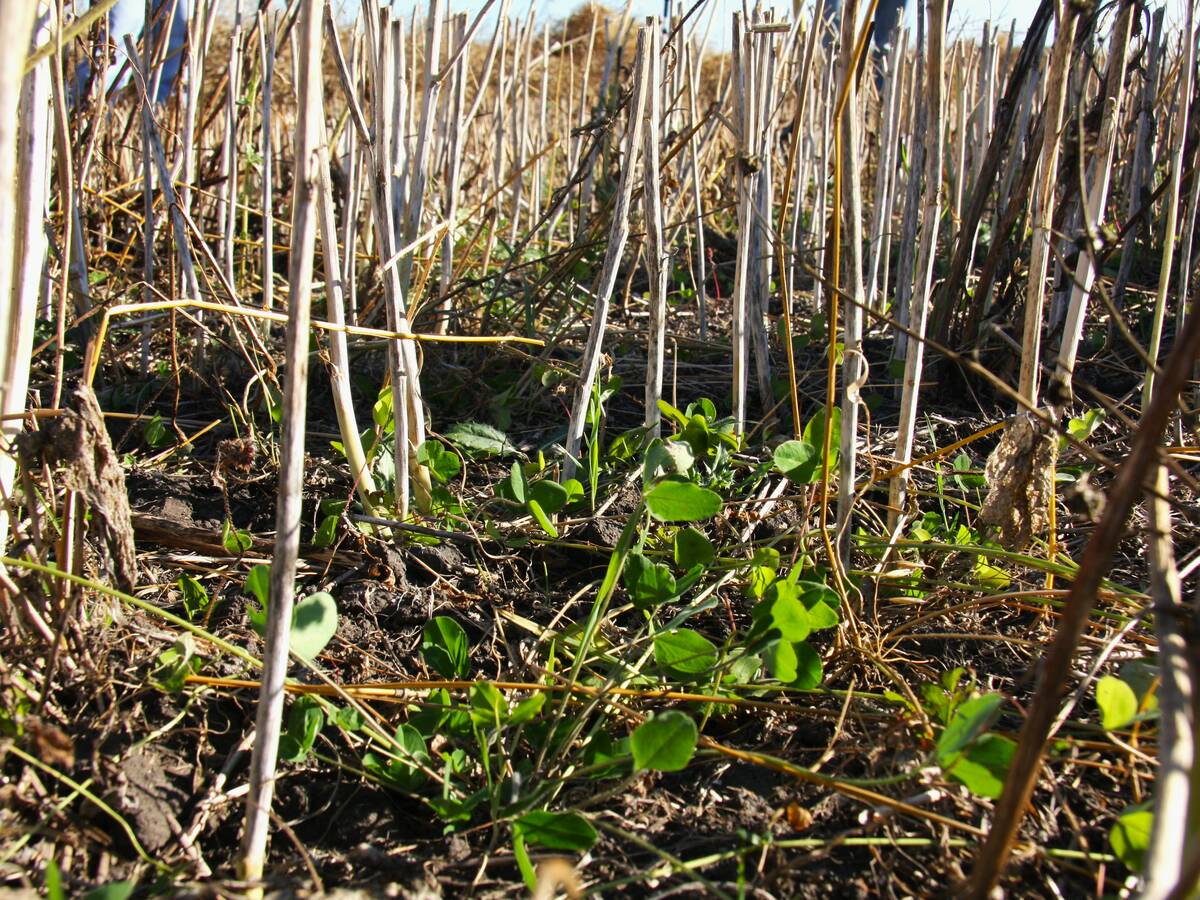A renowned expert in herbicide resistant weeds has a simple message for farmers: mix it up.
Hugh Beckie, a researcher with Agriculture Canada, updated farmers and agrologists on the spread of weed resistance Nov. 30 at Agri-Trend’s Farm Forum in Saskatoon.
He said the Prairies are doing well managing the problem.
While there have been cases of glyphosate-resistant weeds in Ontario, there have been none in Western Canada.
Alberta has 20 herbicide-resistant biotypes, Saskatchewan has 18 and Manitoba 21. The most troublesome for producers are Canada fleabane/ horseweed, wild oat, barnyardgrass, lambsquarters and redroot pig-weed.
Read Also

Saskatchewan project sees intercrop, cover crop benefit
An Indigenous-led Living Lab has been researching regenerative techniques is encouraging producers to consider incorporating intercrops and cover crops with their rotations.
“I do firmly believe that weed resistance is the biggest threat to sustainable agriculture, just because the pipeline of new herbicide modes of actions are empty,” he said.
Delaying the spread of these herbicide-resistant weeds is paramount for producers, he said. Without new modes of actions to kill weeds, the number of tools for producers are limited.
Beckie highlighted the spread of Group 1-resistant wild oat, which has spread across the Prairies, most notably in Manitoba. He cited research showing the resistant weed in 55 percent of Manitoba crops in 2008.
Other concerns include Group 1-resistant green foxtail, Group 2-resistant broadleaf weeds such as wild mustard and cleavers.
He said a multi-pronged approach aimed at minimizing resistance growth is key to managing these risks.
Beckie stressed the importance of crop rotations, as well as using tank mixes and combination products with multiple modes of action. He said producers shouldn’t use a herbicide from a single group more than once every two or three years.
“Recent research indicates that herbicide mixtures are more effective than rotations in delaying herbicide resistance evolution in weeds,” he said, referring to mixtures of Group 1 and 2 herbicides that have slowed the spread of herbicideresistant wild oats.
Oilseed production has increased on the Prairies in recent years – up to 33 percent of crops in 2011 – while cereal production has decreased, driven by favourable market conditions and Roundup Ready canola.
“I try and tell growers, don’t follow the market too closely. Keep to your rotation because crop prices are pretty good across the board,” said Beckie. “So try and keep a long-term view.”
Phil Thomas, senior crop adviser with Agri-Trend, said herbicideresistant canola provides producers with an effective mode of action, but sticking to just one variety causes problems.
“We’ve got lots of data to show what happens in a continuous canola rotation,” he said. “It goes downhill and sideways awful fast. Even canolawheat, canola-wheat is probably a very bad rotation.”
Thomas recommended a one-in-three rotation.
With few new herbicides likely to be developed, Beckie expects to see more crops stacked with herbicideresistant traits. However, he warned producers to be careful.
“Stewardship is important,” he said, using the example of a farmer who grows glyphosate-and dicambraresistant soybeans every year, putting him at risk of losing the effectiveness of both herbicides.
“There’s a lesson there,” he said. “We have to manage these crops.
We can’t grow them year after year, because when you do the same thing year after year, nature is going to find a way to get around it and you’ll end up with resistance.”














